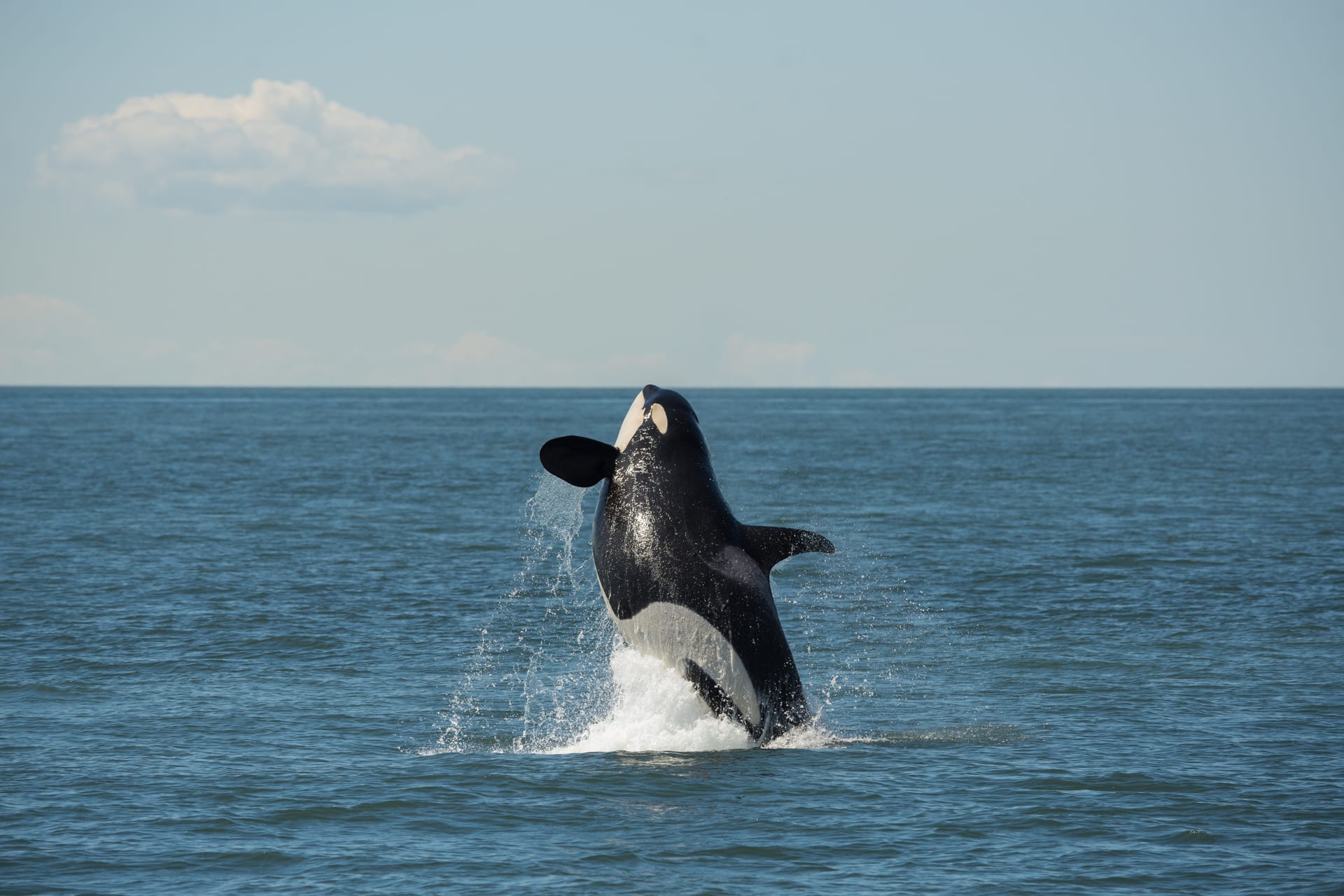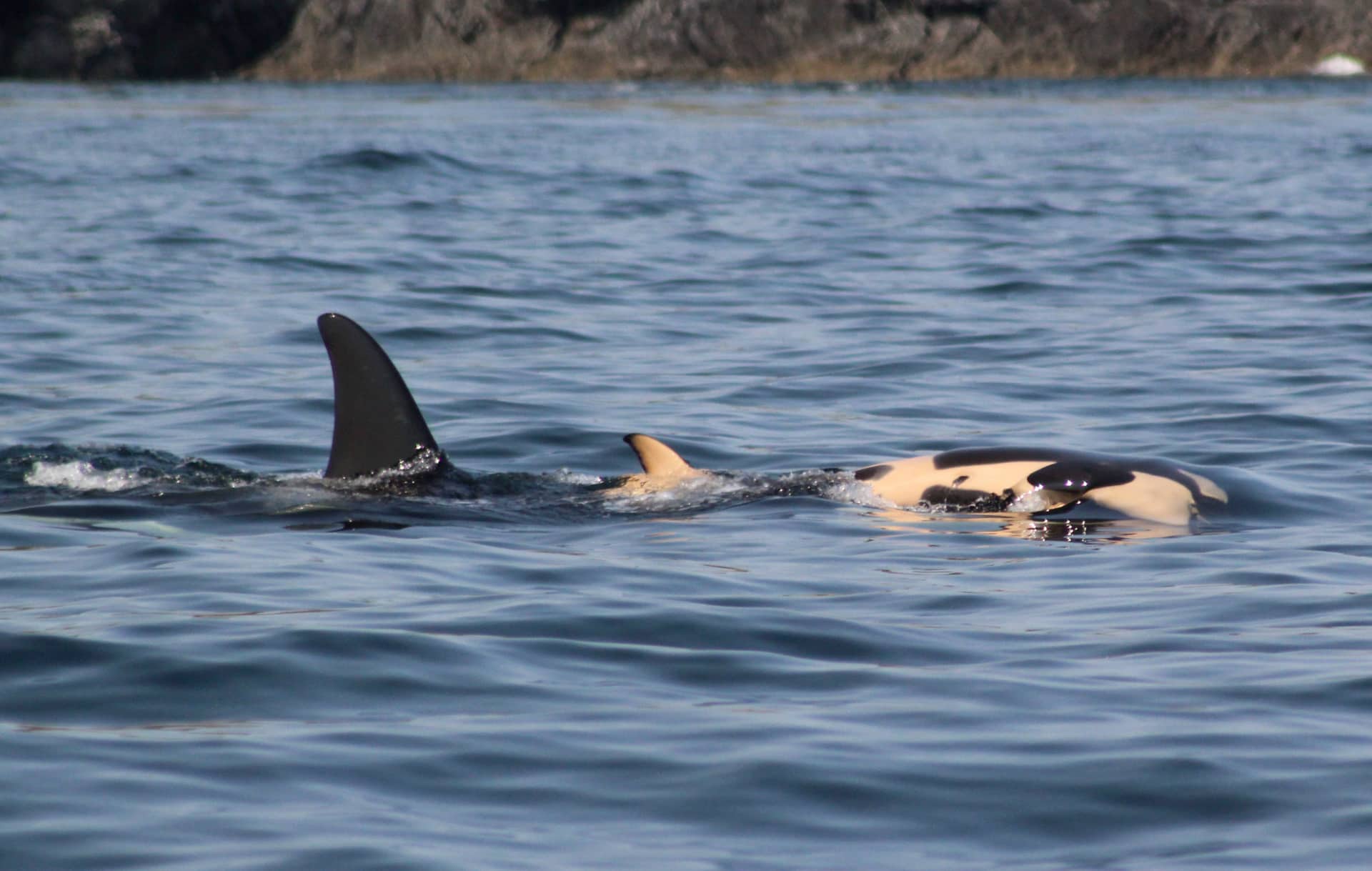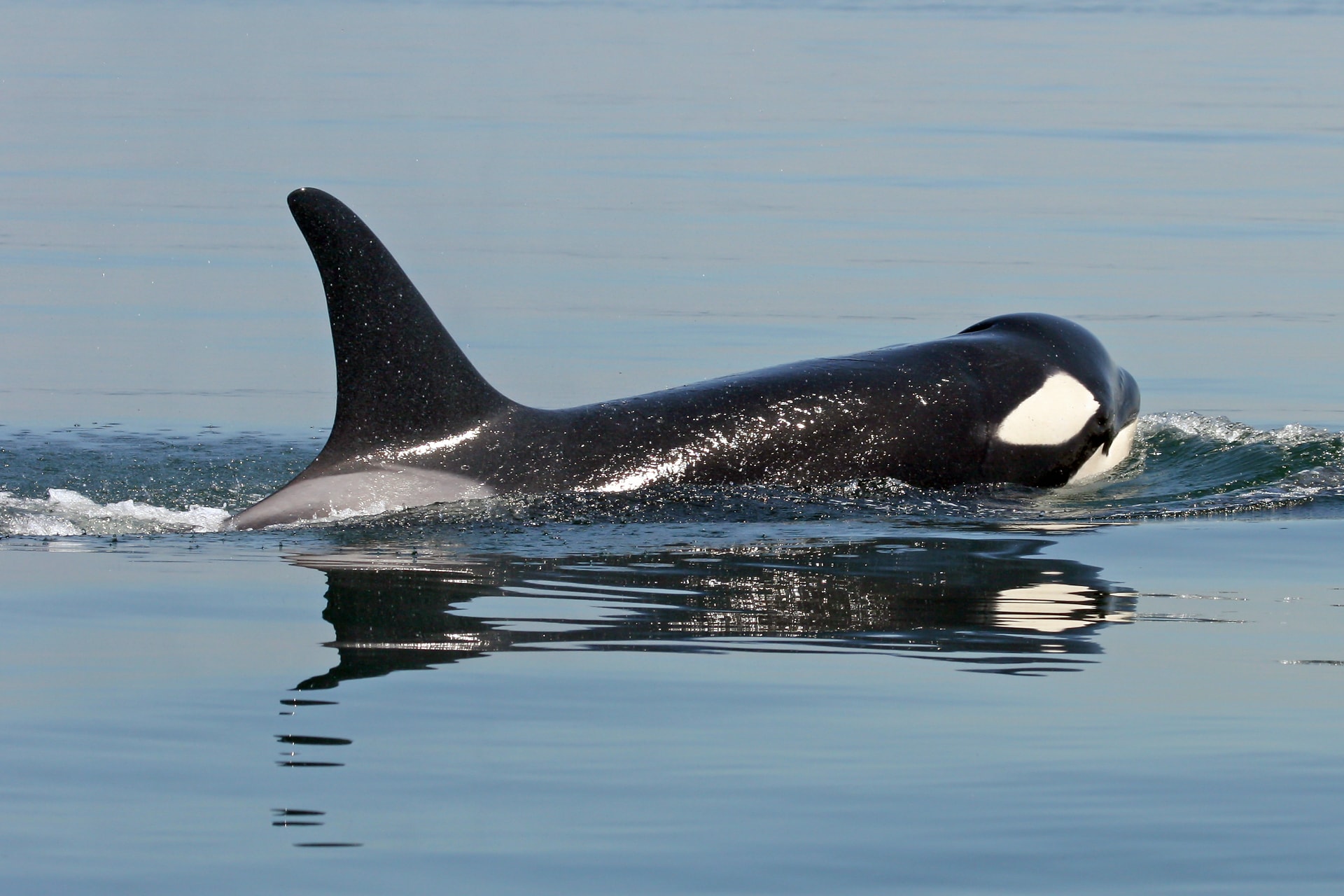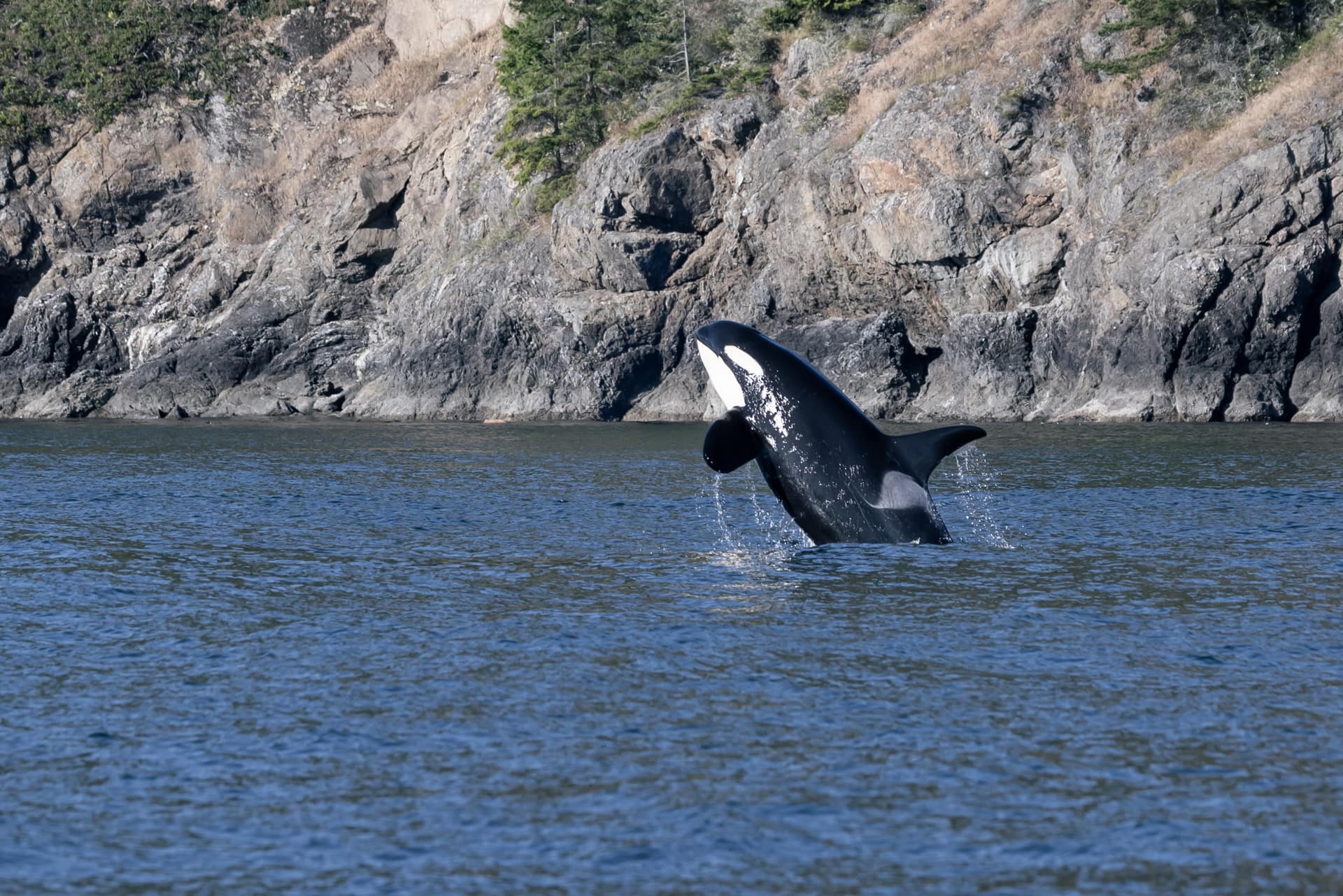
Confirmation of three potential moms-to-be—J19 Shachi, J36 Alki, & J37 Hy’Shqa— brings hope tinged with fear. In 2020, at least six females appeared pregnant, yet just two calves—J57 Phoenix & J58 Crescent—are swimming in the Salish Sea today. Sadly, none of the other assumed-pregnant females have been witnessed with a calf.
The unfortunate truth is that a pregnancy does not always result in a healthy calf in this endangered community. In fact, University of Washington studies show that 69% of known Southern Resident pregnancies are failing before birth due to malnutrition. Successful births can turn to tragedy within hours as J35 Tahlequah vividly showed.

J35, Tahlequah, pushed her dead calf for 17 days.
In wild populations, many newborns may not survive their first year. In the Southern Resident community, however, the challenges start before birth. Mom first needs to find enough food to nourish them both through the 17-month pregnancy. No easy feat when your main prey—Chinook salmon— is also on the Endangered Species list.
Killer whale females are considered to be sexually mature in their early teens, and in fact, J46 Star was known to be pregnant last year, age 11, though sadly no calf was ever seen. In a healthy population, a killer whale might be expected to give birth every 2 to 3 years, and indeed we are seeing this in the transient orca population.
J19 Shachi aged 42 is the oldest of the pregnant females, yet known to only have given birth to two calves: J29, born and died in 1993, and J41 Eclipse, in 2005. UW studies show she was pregnant at least three other times since, but no calves seen.
J36 Alki and J37 Hy’Shqa are both in their early 20s, each with only one known calf. Only J49 T’ilem I’nges survives today, as J52 Sonic, born to J36, died aged two with signs of malnutrition.
Will age be a factor? 10 Southern Residents have given birth at a similar age to J19 (aged 42), however in recent years moms, calves or both were lost:
- J14 Samish aged 42, was presumed mom to J55, who sadly died within weeks of birth; and later that same year, J14 was gone.
- J16 Slick was 42 when she became mom to J50 Scarlet, who died aged 3.
- J17 Princess Angeline was another of the “baby boom” mothers of 2015. She died four years later aged 42, with apparent signs of peanut-head. Fortunately her female calf J53 Kiki survived.
These three older moms had calves when their own daughters also had youngsters. Yet research shows that by early 40s, like humans, these females usually cease reproduction (after menopause) in order to play an important grandmothering role to their daughters’ calves. In fact, the effect of this role is so strong that calves are 4.5 times more likely to die if this grandmother whale dies.
So it’s concerning that J19’s daughter—J41 Eclipse—is mom to two young calves, J51 Nova and 1 year-old J58 Crescent. If J19 has a successful birth, she will be busy mothering, with little time to invest in her grandbabies, and the salmon she would have caught and shared with them, will need to go to her own calf.
J35 shares a special moment with 1 year-old J57.

One final cause for concern is that since the 1990s, more male calves are surviving than female. The reasons for this are still uncertain, but suspects are most likely the usual lineup: food, stress and the poor quality of their habitat, i.e. polluted and noisy.
Fortunately, there is a good solution— give them enough food! If better fed, they could better weather the other problems we’ve created in their environment.
We want to be able to celebrate pregnancies with hope not fear; to watch the next generation of newborns grow to maturity and have calves of their own. It’s not too late if we restore wild salmon populations, and give the Southern Residents access to the healthy supply of year-round wild Chinook they need, and deserve.






